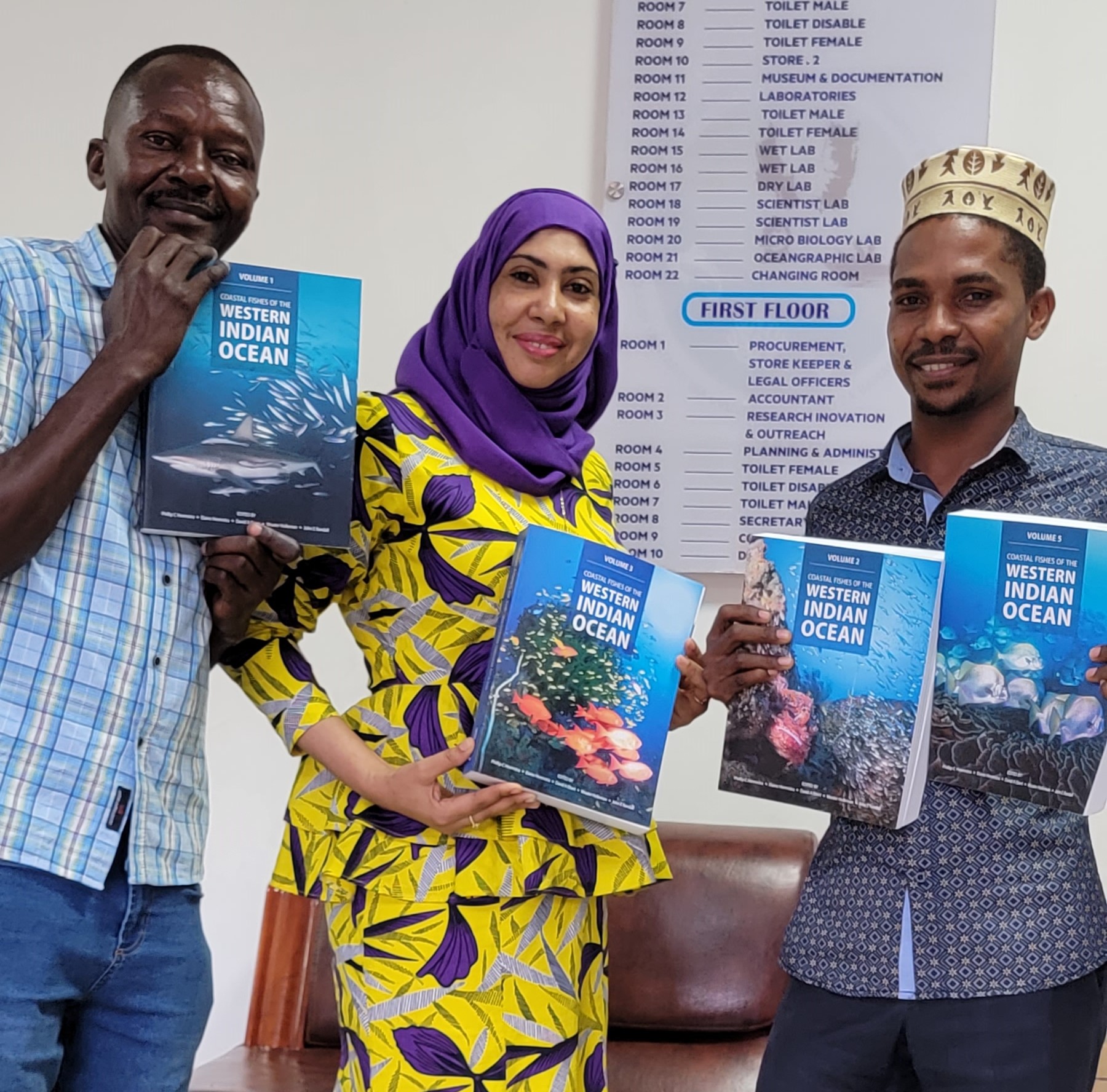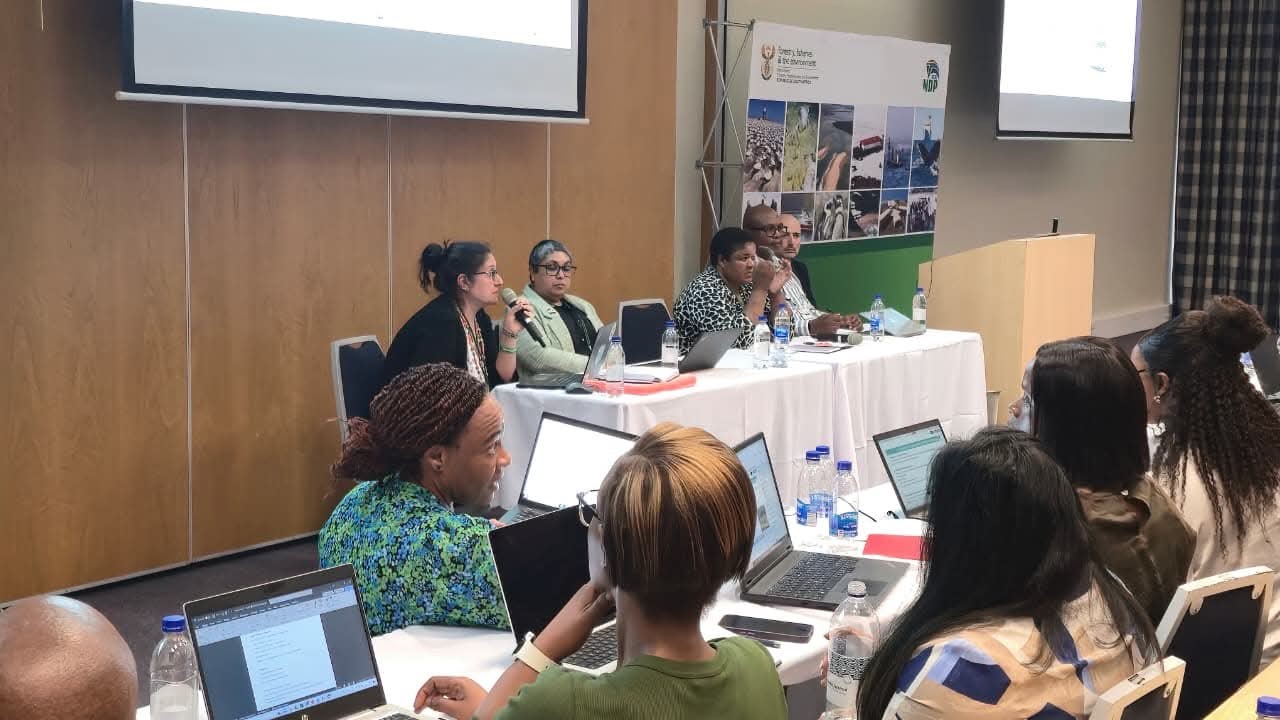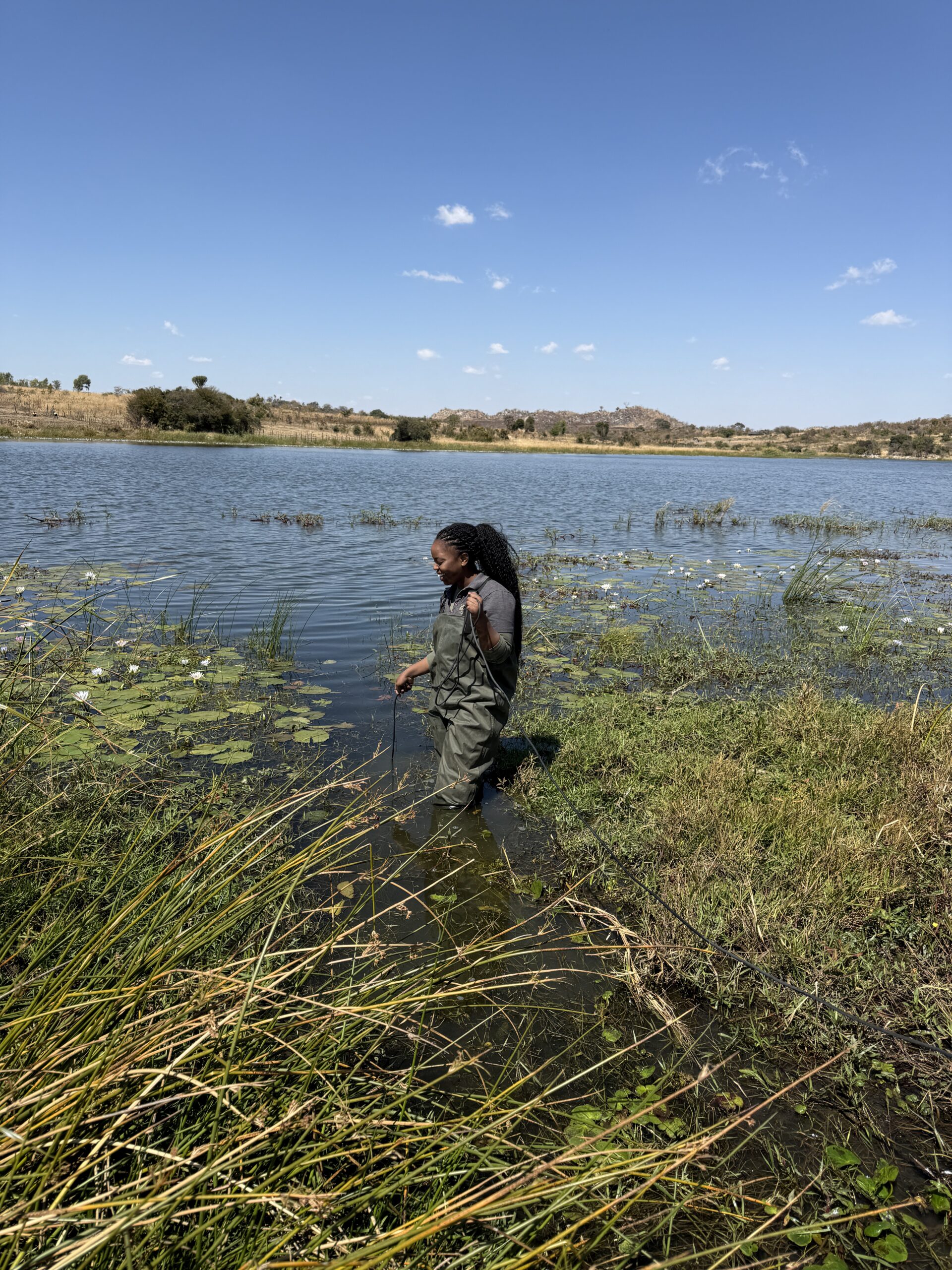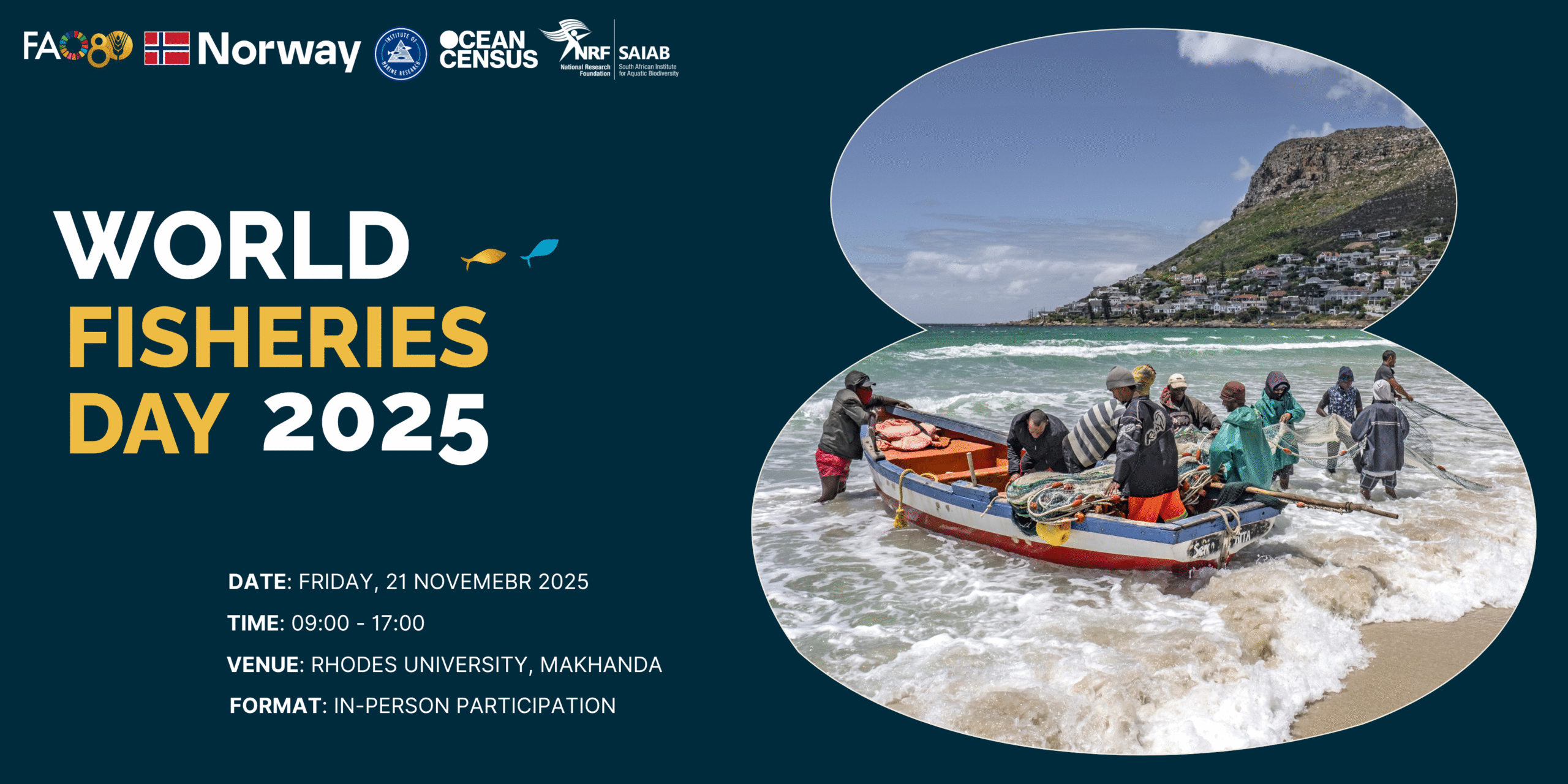– Lucky Dlamini (NRF-SAIAB Communications and Stakeholder Relations Manager)
Published in September 2022, the five-volume Coastal Fishes of the Western Indian Ocean (CFWIO) publication is a monumental achievement by the NRF- South African Institute for Aquatic Biodiversity (NRF-SAIAB). It serves as an invaluable tool for identifying fish species inhabiting the coastal waters of the Western Indian Ocean (WIO), spanning from the Red Sea to Cape Point, and from Kanyakumari to St Paul and Amsterdam Islands. The comprehensive content includes detailed keys, diagnoses, species descriptions, and illustrations, providing a rich resource for marine enthusiasts and researchers alike.
On a mission to propel marine research endeavours within the African region, the NRF-SAIAB has made a significant contribution by donating copies of the highly anticipated CFWIO publication to key African institutions. This generous gesture made by the NRF-SAIAB Managing Director, Dr Angus Paterson aims to facilitate scientific exploration and knowledge dissemination within the WIO ecosystem.
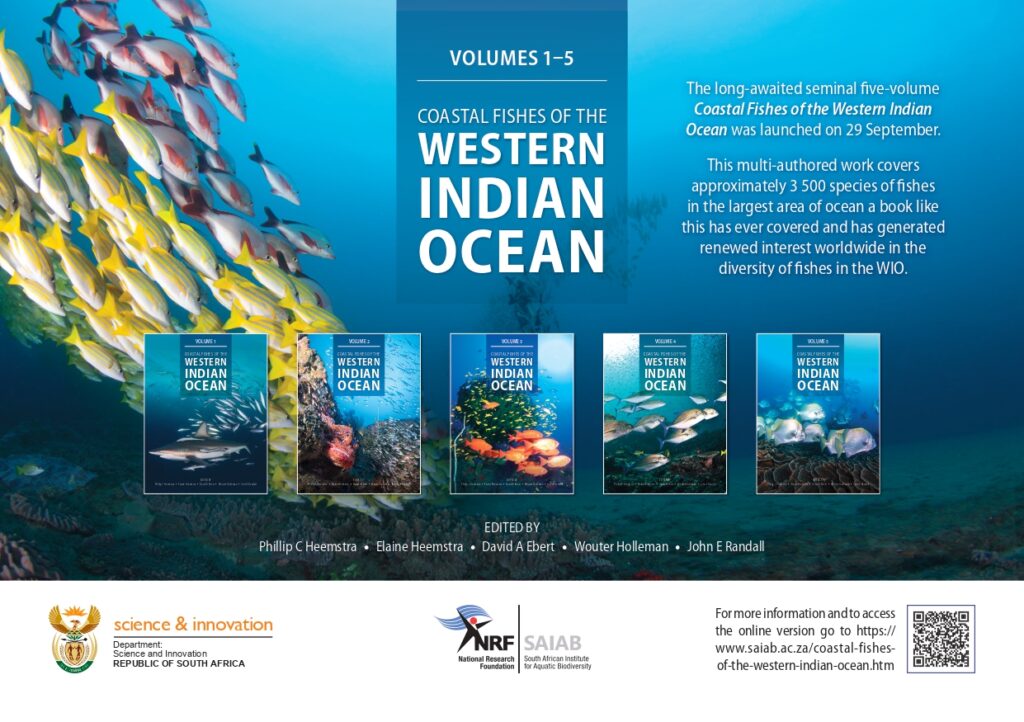
The multi-volume work, which took 25 years to complete, comprises a total of 170 printed copies which have been distributed to the book’s contributors and editors across the globe. Additionally, over 800 USB cards containing the digital version of the publication were disseminated to delegates during the 2022 WIOMSA Symposium, further extending the reach of this invaluable resource.
Recognising the importance of supporting educational and research initiatives, NRF-SAIAB distributed copies of the publication to esteemed institutions across five African regions. Beneficiary institutions include the Seychelles Fishing Authority; Tanzania Fisheries Research Institute; Kenya Marine and Fisheries Research Institute; three institutions in Mozambique (the Mozambique Oceanographic Institute, Eduardo Mondlane University and the Maputo Museum of Natural History); and Moroni-Union of Comoros National Research Institute for Agriculture, Fisheries, and the Environment.
Commenting on the impact of the donation, Ben Onyango from the Kenyan Fisheries Research Institute emphasised how the CFWIO books will empower local communities and researchers in marine conservation efforts. He highlighted the role of these resources in enhancing awareness and understanding of local fish species, their habitats, and conservation needs. Adding that: “The books will be instrumental in ensuring accurate taxonomic identification of fisheries resources, thus mitigating misidentification of species. This, in turn, will pave the way for expanded research in biodiversity, ecological studies, and serve as a baseline for monitoring and facilitating the development of conservation strategies.” Furthermore, the Kenya Fisheries Research Institute aims to extend the utilisation of these books to enhance its research efforts within the Kenyan Observer Programs, which involve training observers on-board commercial fishing vessels to gather surveillance and fishing data across various fishery types including longline fisheries, trawlers, and crab fisheries.
“The potential for discovering new species or identifying new geographical locations through these [CFWIO] resources and training is substantial, underscoring the significant impact these taxonomic books will have on our work,” said Ben.
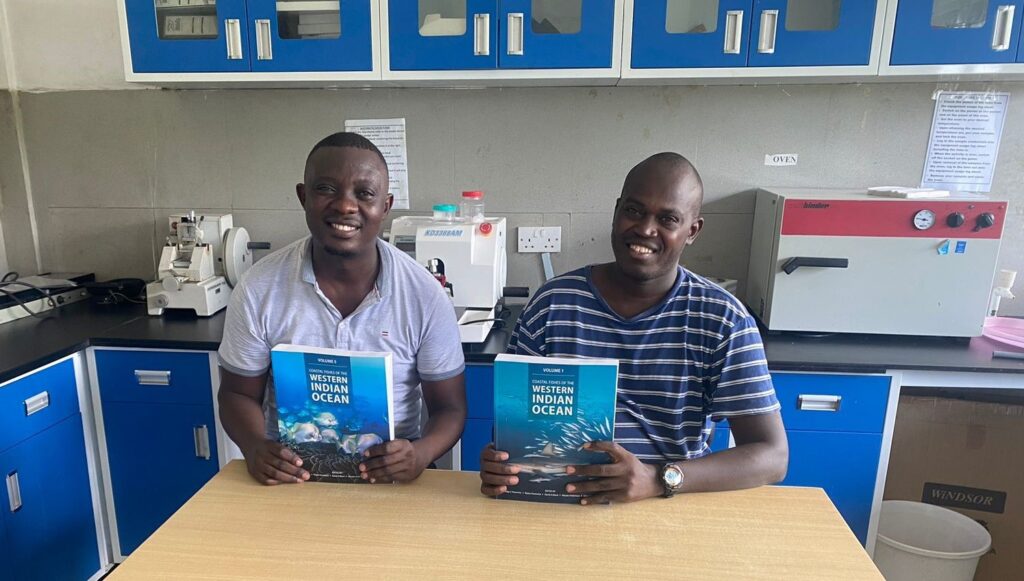
Through this donation, NRF-SAIAB aims to foster collaboration and knowledge exchange among marine science professionals. Lourenço Zacarias of the Mozambique Oceanographic Institute expressed gratitude for the donation, emphasising its potential to significantly impact ongoing research efforts within their institution and the marine ecosystem of the Western Indian Ocean. Adding that, the donation reflects a profound commitment to advancing knowledge and fostering academic growth within the African regions. “Your [the NRF-SAIAB] generosity will not only benefit current students and researchers but will also leave a lasting legacy for generations to come,” he said.
In echoing sentiments, Mathew Ogalo Silas from the Tanzania Fisheries Research Institute emphasised the multifaceted significance of these books. He highlighted their role not only in research but also as crucial educational resources for their team, fostering capacity building in the training of aspiring researchers in marine biology and conservation. Adding that, “The comprehensive data on endangered or vulnerable species, such as sharks and rays, holds immense significance for our conservation efforts. It enables us to prioritise effectively and devise targeted strategies for safeguarding these threatened species within the Tanzania region.”
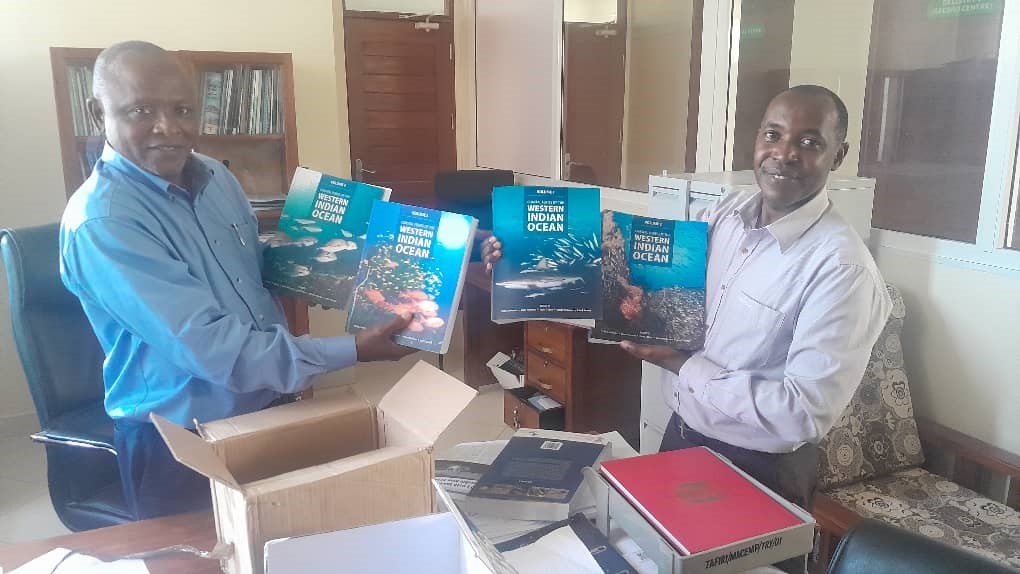
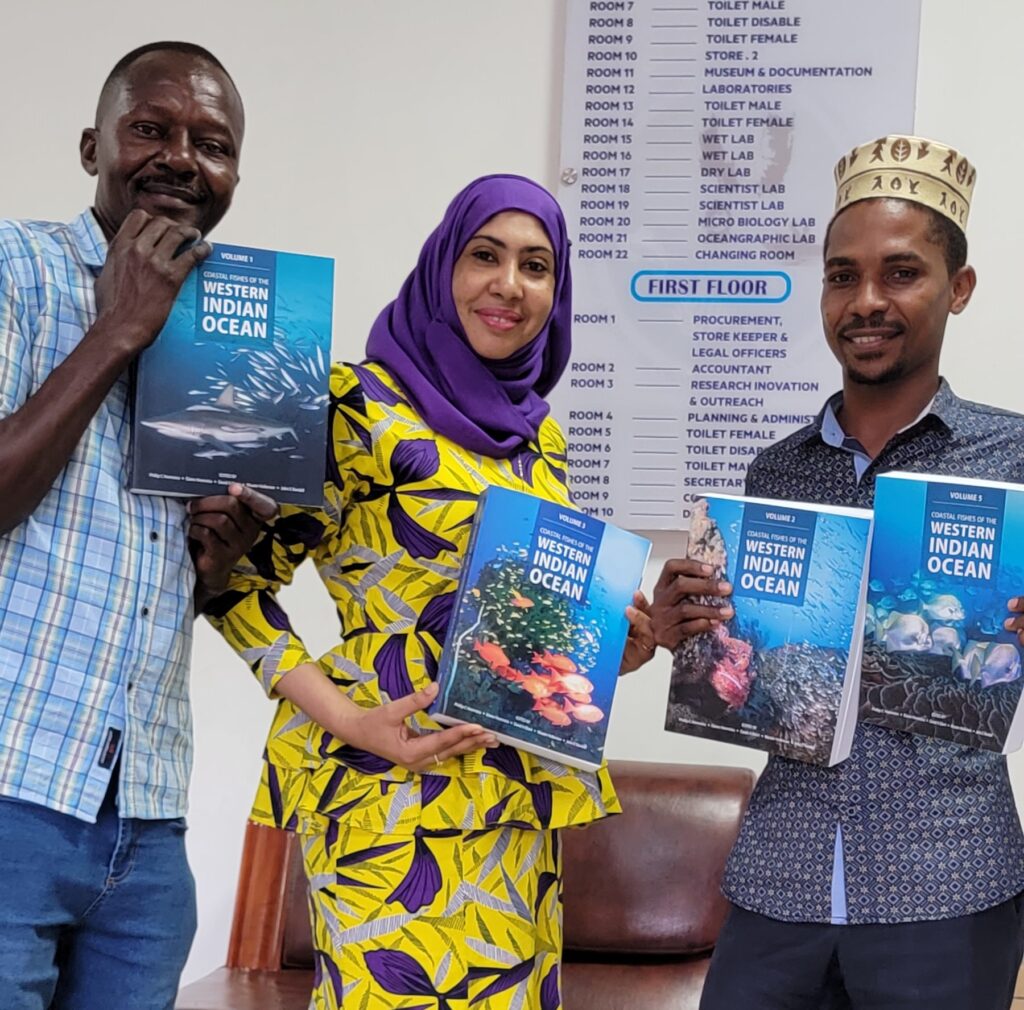
The Tanzania Fisheries Research Institute showcasing receipt of their CFWIO set.
The CFWIO publication has already made strides in practical application, as evidenced by its use in training programs organised by the EAF-Nansen Programme, a programme executed by the Food and Agriculture Organization of the United Nations (FAO) and research surveys conducted in Mozambique and Tanzania on-board the research vessel Dr. Fridtjof Nansen.
Dr. Yonela Sithole, a NRF-SAIAB Post-Doctoral Fellow and custodian of the CFWIO publication, highlighted the book’s role in facilitating species identification during the Nansen Programme surveys, noting its significance in expanding scientific knowledge: “The survey recorded possible new species and new geographical records for Mozambique – READ MORE HERE (pg.22). These new discoveries were aided by the use of the CFWIO books which greatly facilitated species identification, providing detailed illustrations and a glossary of identification key terms to assist every user. This guide was highly appreciated by every user during the Mozambique and Tanzania survey and the books will serve as valuable resources for future surveys in the Western Indian Ocean,” said Dr Sithole. Read more here about the Nansen Programme expedition.
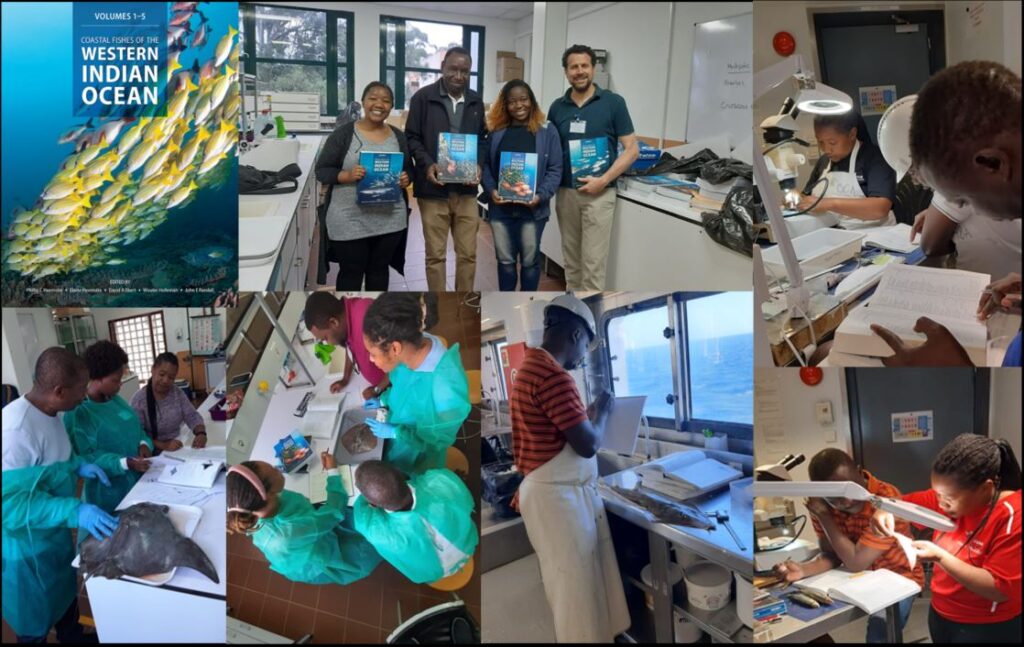
Looking ahead, NRF-SAIAB encourages users to provide feedback for the continuous improvement of the CFWIO publication, ensuring its relevance and effectiveness for future researchers and readers. This collaborative approach underscores NRF-SAIAB’s commitment to advancing marine research and conservation efforts within the WIO region.
For enquiries and feedback regarding the CFWIO publication, interested parties can reach out to Dr. Yonela Sithole at CFWIOinterest@saiab.nrf.ac.za
